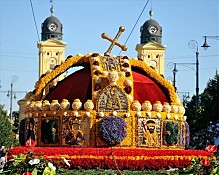Tuesday, 15 April at 5 pm
American Corner Debrecen
Guest speaker: Esther T. Thyssen, Yale PhD 1999, Independent Scholar of Art History
Short Bio: Esther T. Thyssen (Yale PhD 1999) wrote her dissertation on the Abstract Expressionist movement in New York, with focus on the sculpture of the Dorothy Dehner, fellow artists and one-time wife of David Smith. Thyssen has published essays on the work of Dehner and New York School sculpture, and is currently preparing entries on American artists for the Routledge Encyclopaedia of Modernism (forthcoming 2015). As a former Fulbright Guest Professor of American Studies at the University of Debrecen (2006) Thyssen is returning to Debrecen to participate in the American Art History course currently taught by Dr. Lenke Nemeth in the Institute of British and North American Studies.
Abstract:
David Smith (1906-1965)* was the pre-eminent sculptor of the New York School. Best known for his iron and steel constructions, Smith created cohesive sets of sculptures, each organised around a particular system of forms, metaphors, and methods. Smith sculpted found metal with the oxyacetylene torch and welded the cut shapes together. An anthropomorphic tendency recurs regularly in Smith’s work, even in the Cubi series (1961-65), mostly composed of spare geometric volumes. Planar parts are joined at angles to entrap space, or layered thinly to slice through space rather than to displace it. From the mid-fifties until his death in a car accident in 1965, Smith’s output was prolific and monumental, his process driven by his wartime experience as a machinist and metals fabricator.
Smith’s work was at the Venice Biennale in 1954 and 1958, and in many other exhibitions of American art organised by the Museum of Modern Art in New York, sent to tour in Europe. In 1962 he made sculpture for the Spoleto Festival in Italy by invitation. While in residence for one month, Smith welded 27 monumental assemblages from tools and manufacturing equipment at an abandoned factory site to great acclaim. The talk will focus on the sculptures made in Italy, within the context of Smith’s oeuvre, and the impact Smith had on post-war European sculpture, particularly the works of British sculptor Sir Anthony Caro (1928-2013). Smith legitimated the direct-metal process, the use of industrial materials and fabricated elements, as well as overwhelming scale in post-war sculpture. Smith’s prestige secured the modernist plinth from which the next generation could leap into Minimalism.

















